#Masahiro Tanaka
Photo

マー君についての画像
0 notes
Text
[NOTES on a SCORECARD] Jinichiro Kozuma Cashes in at Second LIV Golf Event
[NOTES on a SCORECARD] Jinichiro Kozuma Cashes in at Second LIV Golf Event
Jinichiro Kozuma enjoyed quite a windfall at the recent LIV Golf tournament, which was held near Portland, Oregon. The Kagoshima native finished sixth at Pumpkin Ridge in the event won by South Africa’s Branden Grace, who received $4 million USD for his two-shot victory on July 2.
Kozuma was 2-under par for the three-round tournament and ended up five strokes behind Grace.
Here is the kicker:…

View On WordPress
#bobby fischer#boris spassky#chess#hideto tanihara#jack gallagher#jinichiro kozuma#liv golf#mao asada#masahiro tanaka#miyoko watai#new york yankees#notes on a scorecard#rui hachimura#ryosuke kinoshita#sapporo#sports#thomas bach#tohoku rakuten golden eagles#uncategorized#washington wizards#yuki inamori
0 notes
Text
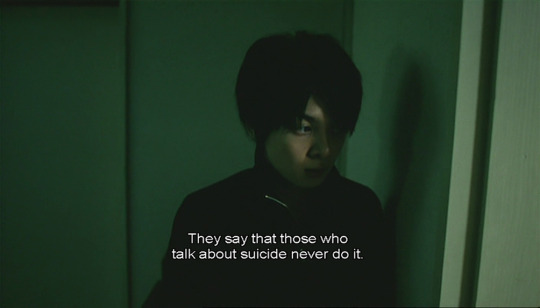

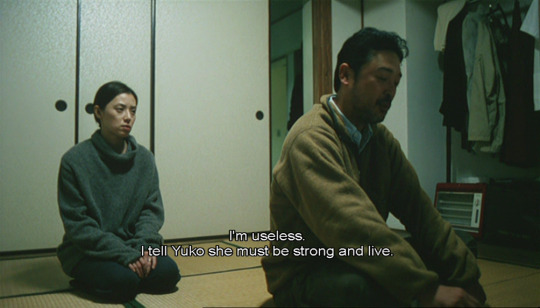

#Bashing#Masahiro Kobayashi#Fusako Urabe#Nene Ohtsuka#Takayuki Katô#Kikujirô Honda#Ryûzô Tanaka#Teruyuki Kagawa#Drama#2005
13 notes
·
View notes
Text






Juri (SixTONES)

6 notes
·
View notes
Text


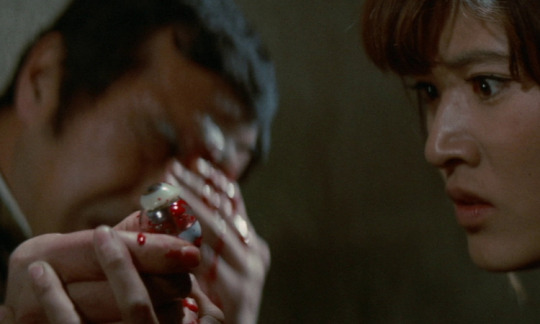
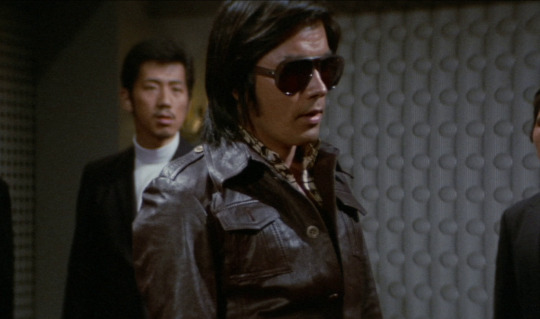



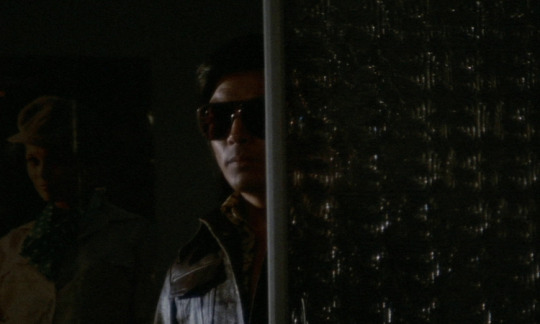

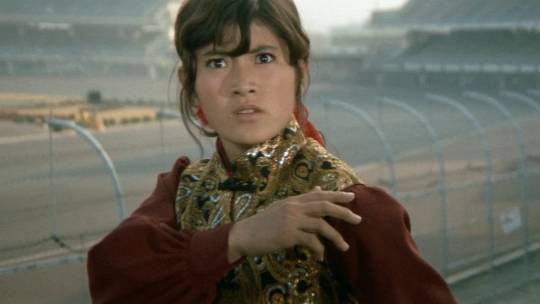
Onna hissatsu ken: Kiki ippatsu (Sister Street Fighter: Hanging by a Thread, 1974)
"What amazing sisterly love. Ha ha ha! I'll be sure to send Koryu to the afterworld in a manner even more cruel."
"You kill innocent people like they're insects. It's inhuman!"
#Onna hissatsu ken: Kiki ippatsu#Sister Street Fighter: Hanging by a Thread#street fightin' cinema#japanese cinema#blood tw#eye trauma#(it's a fake eye anyway it's cool) (like within the film it is also a fake eye)#kazuhiko yamaguchi#masahiro kakefuda#norifumi suzuki#etsuko shihomi#tamayo mitsukawa#michiyo bandô#hideo murota#hisako tanaka#kôji fujiyama#takashi hio#taiko rin#masashi ishibashi#kazuyuki saito#osamu kaneda#shunsuke kikuchi#aww yeeeh she's back! breaking bones and smashing faces! a virtual retread of the first SSF film‚ with Shihomi once again investigating a#smuggling operation in Japan‚ facing familial betrayal‚ bizarro martial arts masters and the incomparable Ishibashi as chief henchman#it's becoming a familiar formula but im not complaining‚ these films are just fun ok. i did miss Chiba a little this time around but at the#same time I think it's only fair that Shihomi get full lead status and his presence tended to detract from that a little in the previous#entry. there's a racecourse set fight in this one which does fascinating things with a concrete brutalist setting (very much at odds with#the busy streets or natural beaches of the first film's major showdowns). highly enjoyable hokum and Shihomi still kicking it out of the#park (and directly into a goon's face) as the titular badass with a heart of gold and fists of pure justice
8 notes
·
View notes
Photo






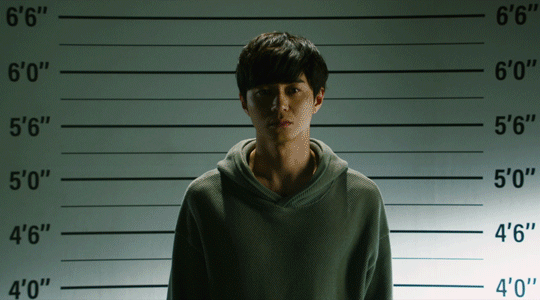



The Confidence Man JP: Episode of the Hero
コンフィデンスマンJP 英雄編 (2022)
#The Confidence Man JP: Episode of the Hero#The Confidence Man#コンフィデンスマンJP 英雄編#Dako#Boku#Namiko#Masami Nagasawa#Masahiro Higashide#Ryoko Hirosue#Ryo Tanaka#長澤まさみ#東出昌大#広末涼子#田中亮#Japan#movie#gif#2022
24 notes
·
View notes
Text
Five underappreciated anime that I would recommend!
1. Canaan (2009)
This is, from what I understand, an adaptation of a side-story chapter for the visual novel series 428: Shibuya Scramble, guest-written by Nasu Kinoko and guest-illustrated by Takeuchi Takashi. That is to say, the Type-Moon guys — the creators of Tsukihime, Kara no Kyoukai, and the now-legendary Fate/Stay Night. However, Canaan doesn’t take place in the Type-Moon shared universe(s), since it’s for another company’s property.
That being said, the anime adaptation is quite comprehensible on its own terms, likely due to the adaptation being written by the prolific and highly skilled screenwriter Okada Mari (Hanasaku Iroha, O Maidens In Your Savage Season, Mobile Suit Gundam: Iron-Blooded Orphans, Maquia). Her writing imbues the narrative with enough emotional intensity to make up for the occasionally-convoluted nature of the plot, and the backstories of the characters are hinted at just enough so that the viewer can understand their relevance, without taking up too much precious screen time. It can be a little hard to follow at points, but I ended up understanding it decently well anyway.
The production values are very high indeed, due to the anime being produced by P.A. Works, and directed by Andoh Masahiro (Sword of the Stranger, Hanasaku Iroha, O Maidens In Your Savage Season). The action animation is consistently stunning, the characters are beautifully expressive, and the overall look of the show is fantastic.
And the voice acting is an absolute treat, with the lead role of Canaan herself taken by Sawashiro Miyuki, the antagonist role of Alphard taken by Sakamoto Maaya, and Nanjou Yoshino in the role of Oosawa Maria, the POV character for a lot of the story. The supporting voice cast is packed with talent too — Hamada Kenji, Tanaka Rie, Nakata Jouji, Tomatsu Haruka, Hirata Hiroaki, Noto Mamiko, and even Ootsuka Akio in a minor role!
The premise is sort of a science fiction type of thing, but set in the (quasi-)contemporary location of 2000s China, where outside of the sci-fi conceit, the setting is largely realistic. The tone and mood is mostly that of an action thriller, with some nail-biting suspense here and there, but there are some beautifully soft and tender moments as well — often involving Canaan and Maria. Yes, folks, this has yuri in it, although it’s (strongly) subtextual.
Anyway, I would recommend this to people who love Ghost in the Shell: Stand Alone Complex, Kara no Kyoukai, Fate/Zero, and probably also Cowboy Bebop.
2. Tetsuwan Birdy OVAs (1996)
This is distinct from the later adaptation of the original Tetsuwan Birdy (Birdy the Mighty) manga, called Tetsuwan Birdy Decode, which came out in the late 2000s — this one came out in 1996 and was produced by Studio Madhouse in their prime.
The main characters are Senkawa Tsutomu (voiced by Iwanaga Tetsuya), a hapless teenager who gets accidentally killed(!) by an alien spaceship on his way to school one day, and Birdy Cephon Altirra (voiced by Mitsuishi Kotono), a human-looking alien and an intergalactic government agent who saves Tsutomu by merging her body with his. Effectively, they become two people in one body, which can shift between the forms of Birdy and Tsutomu…. except Birdy still needs to deal with all the rogue aliens who threaten the safety of the galaxy, while Tsutomu needs to study for his high school entrance exams. From what I’ve been told, the premise is fairly reminiscent of Ultraman and other classic tokusatsu series.
It’s four tight episodes of classic ‘90s OVA goodness, with a fun and slightly silly sci-fi concept that is nonetheless wrung for some surprisingly effective drama at times. The main thrust of it, though, is action comedy — and it definitely delivers on that front. The fight scenes are superbly animated, including some early-career work from now-legendary animator Suzuki Norimitsu, and the character designs by Takahashi Kumiko (Witch Hunter Robin, Snow White with the Red Hair, Cardcaptor Sakura) are amazingly expressive. Birdy’s striking asymmetrical design is a particular favourite of mine. The direction by Kawajiri Yoshiaki (Cyber City Oedo 808, Ninja Scroll, Vampire Hunter D) is solid, and the writing is quite serviceable despite the brevity and premise.
Overall, I wouldn’t say it’s much of an intellectual watch, but if you just want a fun action-comedy ride with an extremely charismatic female protagonist and stunning animation quality, Tetsuwan Birdy is likely to be your jam. I’d recommend it to people who enjoy classic tokusatsu series, the original ‘90s Sailor Moon anime, and the less-depressing parts of Neon Genesis Evangelion.
3. Noir (2001)
This anime series is perhaps not as underappreciated as the others on this list, but I do still feel that not enough people have seen it. It was made by the studio Bee Train, and it’s the first entry in their so-called “Girls with Guns” trilogy (which isn’t actually a coherent trilogy, since they’re three different stories). The series was made right at the end of the cel-anime era, before the transition to digital colouring and compositing, so the masters were shot on film, but it was also made at the beginning of the slow transition to widescreen TV broadcasts, so it’s one of the very rare cel anime that’s in 16:9. This allows for a beautifully detailed look that, IMO, serves to offset the occasionally-limited animation and the frequent re-use of footage.
The premise is basically “secret assassins in France are caught up in weird intrigue and conspiracies”; as such, there’s a lot of very fun gunplay and kickass fight scenes, but also a lot of suspense and mystery. The writing is a little bit slipshod at times, but it ends up holding together, and the characters and (especially) the fantastically moody vibe make the show worth watching.
The characters are imbued with a lot of life and colour, both by their extremely attractive designs and by their voice actors’ wonderful performances. Mireille Bouquet, a young Corsican assassin and one of the two protagonists, is voiced by Mitsuishi Kotono; Yuumura Kirika, the other main protagonist who is a Japanese schoolgirl who has seemingly lost all her memories (but not her exceptional assassin skills), is voiced by Kuwashima Houko; and the mysterious Chloe, who shows up partway through the show, is voiced by Hisakawa Aya. There are definite yuri vibes between Mireille and Kirika, but as with Canaan, it’s all subtextual.
The main draw of the show, though, is its phenomenal soundtrack, courtesy of Kajiura Yuki (.hack//Sign, Kara no Kyoukai, Fate/Zero, Sword Art Online, Demon Slayer) in her very first anime scoring gig. It’s at times propulsive, at times dark and moody, at times beautifully serene, at times melancholy and nostalgic — and it’s utterly memorable.
I would recommend Noir to anyone who likes Canaan, Witch Hunter Robin, Ghost in the Shell, or anyone who just wishes that James Bond were a woman.
4. Flip Flappers (2016)
This anime was produced at Studio 3Hz and directed by Oshiyama Kiyotaka, in a dazzling yet underappreciated directorial debut that was presaged by his impressive animation work on Dennou Coil, Space Dandy, A Letter to Momo, The Secret World of Arietty, and The Wind Rises. Owing to this extremely solid animation background, Oshiyama was able to recruit a lot of prime animation talent for Flip Flappers, and it definitely shows in the stunning sakuga of the wild action sequences that pepper the show’s narrative.
While the fantastic animation is a key draw of this show, the sheer creativity in the worldbuilding, conceptual, and visual design spheres also contribute to its inimitably psychedelic look and feel. The landscapes of the worlds contained in Pure Illusion — the dream-realm that the protagonists enter each episode at the behest of a mysterious scientific organisation — and of the “real” world are whimsical, storybook-like, and slightly “off” in a slightly unsettling but compelling way.
The dreamlike atmosphere pervades the narrative as well — very little about the mechanics of the world is specified out loud, relying heavily on symbolism and visual storytelling to do the heavy lifting for the audience’s understanding. This might be a turn-off for audiences who prefer to have things spelled out for them clearly, but the point of this story is not always to make perfect logical sense, but rather to work on an emotional and metaphorical level. And work, it certainly does.
The episodic structure involving the various worlds of Pure Illusion explores the concept of the Umwelt (the individual sensory “world” of a person or organism), as well as some Jungian concepts and archetypes, in order to express the strange and sometimes-scary developmental stage of adolescence. The characters of Cocona (voiced by Takahashi Minami) and Papika (voiced by Ichimichi Mao) undergo a metaphorical and literal puberty, a coming-of-age similar in some ways to that experienced by the protagonist of FLCL, but with significantly more yuri. In fact, this show has the most outright yuri of any of the anime on this list. But that isn’t very strange for what is essentially a psychedelic magical-girl show: lots of magical-girl anime seem to include homoerotic vibes in some form or another, from Sailor Moon to Nanoha to Madoka.
There are some minor flaws in the storytelling towards the end, IMO, but overall it’s a wonderfully impactful emotional journey to watch Flip Flappers. Plus, the OP and ED are both extraordinarily catchy tunes that I’ve found myself humming on many an occasion.
I’d recommend this anime to anyone who loves weird magical-girl stuff, weird yuri, and/or amazing action animation.
5. Claymore (2007)
An adaptation of the manga by Yagi Norihiro, this anime is considered by many to simply be “basic”, or at least simply “inferior to the manga”. Now. I haven’t read the original Claymore manga (yet! I plan to eventually), but I found this anime to be compelling nonetheless. And if it really is the case that the manga is better, then I definitely look forward to diving in.
Having been produced by Studio Madhouse in the mid-2000s, it’s unsurprising that the vast majority of this anime was outsourced to Korean animation studio DR Movie, a longtime powerhouse subcontractor for both Japanese and American animation alike. That said, the direction of Tanaka Hiroyuki (director of a portion of Hellsing Ultimate and frequent close collaborator of Attack on Titan director Araki Tetsurou) remains sharp, compensating for the sometimes-limited animation with good storyboarding and a strong sense of mood and atmosphere.
Another aspect of Claymore which helps make up for the occasional visual shortcomings is the soundtrack by Takumi Masanori. The compositions are a mix of harder rock and electronic elements with a strong orchestral backbone, as befits a dark-fantasy setting and mood — the faster pieces are edgy and propulsive, very appropriate for the bloody action scenes, and the calmer pieces have a melancholic beauty to them that sticks in one’s memory. I wish the soundtrack were on Spotify, but alas, it is not.
The other sonic element that helps this anime out immensely is its absolutely STACKED voice cast. The main character, Clare, is voiced by Kuwashima Houko, in a fantastic yet understated performance. The other main character, Raki, is voiced by the less-well-known Takagi Motoki, but nearly all the other roles — including many bit parts — are filled with industry legends. Teresa is voiced by Park Romi, Miria is voiced by Inoue Kikuko, Irene is voiced by Takayama Minami, Rubel is voiced by Hirata Hiroaki, Priscilla is voiced by Hisakawa Aya, Ophelia is voiced by Shinohara Emi, and Jean (whom I cannot help but ship with Clare: there’s so much homoerotic tension there!) is voiced by none other than Mitsuishi Kotono. Yes, they got three of the original Sailor Senshi VAs — and I don’t know why that’s funny to me, but it is. And all of the voice actors deliver killer performances.
The premise of the show, before I completely forget to explain it, is that of a dark fantasy world where demons called youma ravage human settlements, with only the titular Claymores to protect humanity. They are a guild of platinum-haired and silver-eyed warrior women who possess superhuman fighting abilities, due to the fact that they’ve been fused with youma essence, and wield the massive broadswords that give them their name. Basically, (s)he who fights monsters must become (partly) a monster to do so.
I’ve heard the vibe of Claymore compared to manga like Berserk, and I don’t know how true that is (not having read the latter for myself), but there’s certainly a lot of bleakness and monstrosity in this fantasy tale. However, the Claymore manga was published in none other than Weekly Shounen Jump, so it’s perhaps unsurprising that the story remains resolutely forward-looking, the protagonists’ arcs focussing on the power of grit, determination, true friendship and loyalty, and protection of the weak and downtrodden. It’s never cynical or sarcastic — always straightforward and sincere despite the frequent darkness of the story.
The writing is consistently solid, even through the controversial anime-original ending (the manga continues long past the point where the anime cut things off), so I’m not sure who to point to for that: Yagi Norihiro for writing the original material, or Kobayashi Yuuko (JoJo’s Bizarre Adventure, Attack on Titan s1-3, Kakegurui, Casshern Sins) for adapting it cleanly for the screen? Either way, it made me want to read the manga to experience more of these compelling characters and their travails.
I would recommend this anime to those who enjoy Kill La Kill or RWBY, or just to those who enjoy powerful women hacking at monsters with massive weapons and making lots of blood spray out.
#anime recommendation#anime recs#flip flappers#tetsuwan birdy#birdy the mighty#claymore#noir#noir 2001#canaan#long post#personal#anime
101 notes
·
View notes
Text
Frieren: Beyond Journey's End #1-4 - It was... Perfect




Episode 1 - The Journey's End
Screenplay: Tomohiro Suzuki
Storyboard: Keiichirou Saitou
Episode Director: Ayaka Tsuji
Animation Director: Reiko Nagasawa
Key Animators: Junko Abe, Shin Ogasawara, Ran Kamezawa, Jun Sekiguchi, Daiki Harashina, Kanata Yanagisawa, Shinichi Yoshikawa, Xujian Li, Odashi, Keisuke Kobayashi, Shinji Ootsuka, Hayato Kakita, Toshiyuki Satou, Ayaka Tsuji, Yoshiko Matsumura, Emi Yamazaki, Kanako Yoshida, Kerorira, Kou Yoshinari
Episode 2 - It Didn't Have to Be Magic...
Screenplay: Tomohiro Suzuki
Storyboard: Tomoya Kitagawa
Episode Director: Tomoya Kitagawa
Chief Animation Director: Reiko Nagasawa
Animation Director: Ayaka Minoshima
Key Animators: Junko Abe, Nobuhide Kariya, Toshiyuki Satou, Harumi Takagi, Daiki Tanaka, Masaho Hori, Yutaka Minowa, Kanata Yanagisawa, Xujian Li, Fuuko Abe, Kyousuke Ootori, Takahito Sakazume, Jura, Yuka Matsumura, Yukiko Watabe, Hayato Kakita, Hiroyuki Kobashi, Jun Sekiguchi, Airi Takahashi, Daiki Harashina, Ayaka Minoshima, Kouta Mori, Shinichi Yoshikawa, Aoi Ootani, Naoki Katou, Sanae Shitaya, Shinya Segawa, Zihan Liu
Episode 3 - Killing Magic
Screenplay: Tomohiro Suzuki
Storyboard: Daiki Harashina
Episode Director: Daiki Harashina
Chief Animation Director: Reiko Nagasawa
Animation Director: Daiki Harashina
Key Animators: Daiki Harashina, Junko Abe, Shin Ogasawara, Mai Toda, Kanata Yanagisawa, Daisuke Shibukawa, Kou Yoshinari, Fei Hung Donghua, Hanwen Ye, Tooru Iwazawa, Honami Takeuchi, Yoshiko Matsumura, Xujian Li, Yukiko Busa, Nonno
Episode 4 - The Land Where Souls Rest
Screenplay: Tomohiro Suzuki
Storyboard: Yoshiaki Kawajiri
Episode Director: Kento Matsui
Chief Animation Director: Reiko NagasawaAnimation Director: Ayaka Tsuji
Key Animators: Shin Ogasawara, Hiroyuki Kobashi, Toshiyuki Satou, Harumi Takagi, Rie Arakawa, Yuka Koiso, Masahiro Yufune, Pinqiao Hui, Norifumi Kugai, Ayaka Satou, Jun Sekiguchi, Miyuki Inoue, Shuuji Maruyama, Ryuuguu-san, Yenxin Fan
Last week was utter hell, with a new class, a new schedule, and my sleep going out of whack. I'm still trying to readjust, and let me explain why I'm mentioning all of this. Almost nothing would have motivated me to get out of my zone and type this post except for Frieren. Frieren is one of my favorite manga series. If you've talked to me about anime/manga before, you would know this. So, ever since it was announced, it has been one of my most anticipated series. To add to that, Keiichirou Saitou was announced as the director. He's a great example of an upcoming new-gen director who has excelled in everything he's been a part of. From the beautiful and abstract EDs he created for The Executioner and Her Way of Life or Boogiepop, to the mesmerizing, dreamlike episodes he directed for Sonny Boy, and the expressive, now very popular Bocchi the Rock. He was a perfect choice as a director for a series like this, and let me tell you, he delivered fully.
Just from a quick glance, you can see how the show looks. Everything is eye-catching, making it almost hard to focus on one particular element because they all just look so good, and no, it's not just the chromatic aberration causing the lack of focus. The various departments responsible for compositing, the background, and the overall color design have done an outstanding job, creating a beautiful and cohesive piece of art. Seeing someone you might consider a less experienced director pulling off such a complete and harmonious experience is incredible. In terms of design, the whole show is aesthetically pleasing. It's not the experimental work you saw in Sonny Boy; it's going in a totally different direction, like a beautiful painting that should be framed on a wall.
It works very well when paired with, you know, how Frieren is as a story. The fantasy world they are in isn't an extremely unique one. You've seen it before; it's fairly typical in that sense. But that's not truly the point. The main focus is showing the day-to-day or year-to-year life of this immortal elf girl, Frieren, and how she views time, how she remembers her past. It's not an incredibly grand adventure, but with the small lens we have on these characters, it feels like a cherished moment, something that should be captured in a photo or painting. It's beautiful in a very simple way. It's not a series made for extremely large moments, I think Frieren has always been focused on a simpler view of life, much like a painting. The smaller details of such a straightforward approach are highlighted so well. The trees in the environment, the squirrels just moving around—there's so much life in each scene. It really all comes together for me like a piece of art.
The consistency lasts through all four episodes, and the staff distribution also seems fairly good, so I expect this to continue throughout the two cours. The pacing itself is perfect. I've really enjoyed how the story has been adapted to animation so far. I believe that nowadays, many anime series have fallen into the pitfalls of adapting things too quickly to capture the interest of newer viewers early on. However, the series composition for Frieren here is excellent.
This writeup might have been shorter than most people were expecting considering how amazing the anime adaptation is and how much I love the source material, but what can really be said about except just praising? I feel like even if you don't like the source material, the anime's execution is almost undeniably good. Additionally, as I said this past week has not been kind to me so my energy is a bit drained, at first I was planning to be more specific in my write up and make points more adhering to the specifics of each episode, but I didn't really have time for that. However, I will do my best to cover every Frieren episode weekly from now on. Make no mistake this is going to be my favorite series from this year.


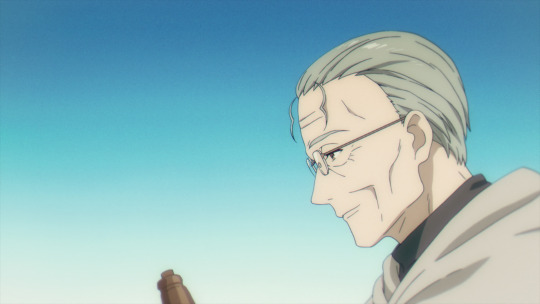
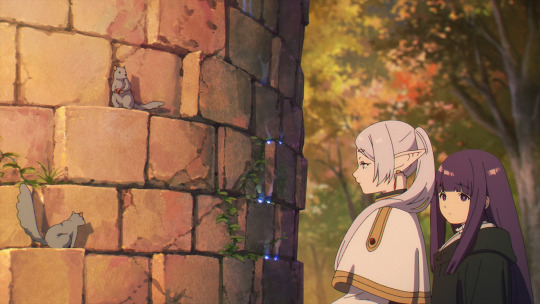


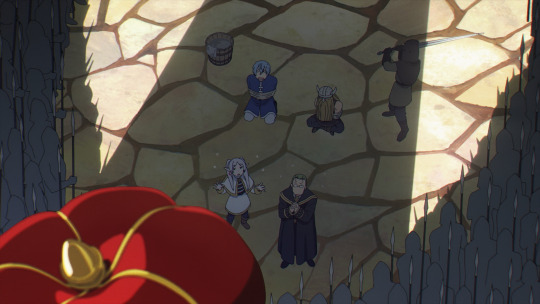








22 notes
·
View notes
Text

Not happy with the translation of this page but think i have it maybe 80 to 90% correct.
20th century NISSAN MOTORSPORTS
1958-2000
'60~
The infancy of domestic racing.
R381 and R382 win consecutive Japanese Grand Prix victories
The dawn of full-fledged motorsports in Japan
The origin of the visit dates back to the late 1950s, when a two-wheeled Asama Volcano race was held. As the 1960s entered, domestic motorcycle manufacturers began to win on the world GP stage, and Japanese industry became a reality on the world stage.
I proved it. The Suzuka Circuit was completed in the fall of 1962, and Japan's first full-scale automobile race, the 1st Japan Grand Prix, was held the following year in May 1963. Each automobile manufacturer, taking note of its promotional effects, soon formed a works team. Nissan selected powerful riders one after another, such as Kenjiro Tanaka, Kunimitsu Takahashi, Gen Kitano, Motoharu Kurosawa, Masahiro Hasemi, Kenji Tohira, Seiichi Suzuki, and Kazuyoshi Hoshino, and many of them went on to become main players in the domestic four-wheel racing world. It will reign for a long time.
Funabashi Circuit in 1965 and Fuji Speedway opens in 1966. Kanto and all over Japan
The racing fever is increasing. Just in time for Tokyo Motor Show.
The automobile industry was in a period of high growth before and after the pick-up.
It was a time when it made great strides as Japan's core industry.
Then, in 1966, Nissan and Prince merged, and Japan's first racing sports car “Prince R380”
will further evolve under Nissan.
In 1968, a large displacement engine with a unique huge wing was introduced.
The R381, with its powerful engine, and the R382 the following year defeated strong rivals to win the Japanese Grand Prix. And formula car races are held in Japan.
Fairlady/Skyline/Bluebird GT cars and Touring cars.
Many car races, as well as endurance races that included these races, were held.
Nissan also actively participated in overseas rallies.
At a time when the World Rally Championship did not yet exist,
Monte Carlo and Safari became the main battlegrounds.
The 1960s was the infancy of domestic racing.
It was a time of rapid evolution and growth. However, the issue of automobile exhaust gas became apparent in the 70s.
In early summer of 1969(?) , Nissan announced that it would be absent from the Japanese GP, and at that moment,
Domestic motor sports had only been growing until then.
The world was forced to seek a new direction.
2 notes
·
View notes
Photo


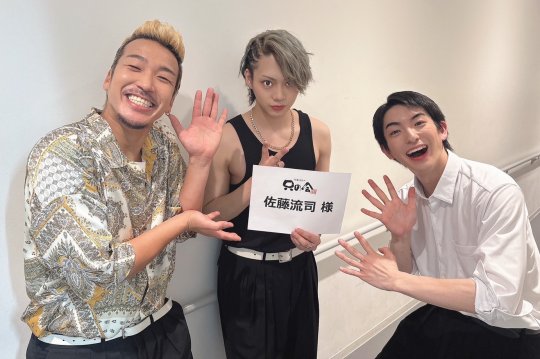
[VIDEO] Tada no Kai: The Archive for Sato Ryuji's "Tada no Kai" is Now Available
SESSION 01
Guests: Aramaki Yoshihiko, Wada Masanari
Video Comments: Fujita Ray, Tanaka Ryousei, Okamiya Kurumu, Makishima Hikaru
Opening and Closing Announcement: Miyano Mamoru
Special Guest: Sato Masahiro
SESSION 02 (DJ PARTY)
Guests: Uekiya Satoshi, Maeda Gouki
Video Comments: Umetsu Mizuki, Hashimoto Shohei, Sadamoto Fuuma, Sato Ryuji
Opening and Closing Announcement: Miyano Mamoru
Special Guest: Sato Masahiro
PERSONAL COMMENTS
Both sessions have various games that Ryuji plays with his guests.
Session 01 revolves around Ryuji's 2.5D activities/activities with Mackey, Maashi and his other fellow 2.5D actors. Highlights include Ryuji revealing his baby photo, stories about Ryuji from his early 2.5D productions, like the "Musical The Prince of Tennis" (Tenimyu), and the feeling of what Ryuji, Mackey and Maashi are probably like when the cameras aren't rolling during the shooting of Rokumachi.
Session 02 is intimate and personal (with a smaller venue capacity), starting off with a DJ session of songs that Ryuji has sung throughout his career, including "Gakuen Tengoku" (from "FIVE") and "MIENAI START". Satoshi-kun and Gouki-kun are friends who Ryuji hangs out with quite regularly in private, and this comes across very strongly during this session. Highlights include all three of them dressing like their characters from "HiGH&LOW" but just being their chaotic selves.
ARCHIVE STREAM INFORMATION
Archive Period: Now to 19.00 (Japan time) on October 18, 2022
To watch the archive streams for both sessions, please refer to this link: HERE
NOTE:
[1] Fujita Ray (who is buddies with Ryuji) has worked with Ryuji on the "Double Drive" series and the "Live Spectacle NARUTO".
[2] Tanaka Ryousei has worked with Ryuji on the "Fire Force Stage -Hakai no Hana, Souzou no Oto-" and the "Musical Touken Ranbu". He is also currently working with Ryuji on the weekly variety show "Rokunin Yoreba Chonaikai".
[3] Okamiya Kurumu has worked with Ryuji on the "Musical Touken Ranbu". Most recently, he has collaborated with Ryuji to release earphones that use their voices for the notifications.
[4] Makishima Hikaru has worked with Ryuji on the "Double Drive" series, the "Fire Force Stage -Hakai no Hana, Souzou no Oto-" and the "Musical Touken Ranbu".
[5] Miyano Mamoru is Ryuji's senior from their agency Gekidan Himawari. He is the voice actor for Shinmon Benimaru, the character Ryuji plays in the "Fire Force Stage -Hakai no Hana, Souzou no Oto-". They have also worked together in the "Movie Theatre Success Sou".
[6] Sato Masahiro is Ryuji's junior from their agency Gekidan Himawari. He has worked with Ryuji on "FIVE", and recently played the protagonist in The Brow Beat's MVs for "Juusei" and "21 GRAM".
[7] Umetsu Mizuki is currently working with Ryuji on the weekly variety show "Rokunin Yoreba Chonaikai".
[8] Hashimoto Shohei has worked with Ryuji on the "Movie Theatre Success Sou". He is also currently working with Ryuji on the weekly variety show "Rokunin Yoreba Chonaikai".
[9] Sadamoto Fuuma has worked with Ryuji on the "Live Spectacle NARUTO", the "Musical Touken Ranbu" and the "Movie Theatre Success Sou".
Source(s): ( x , x )
17 notes
·
View notes
Photo

田中将大/MASAHIRO TANAKA on Twitter: "本日1月14日(日)21:00より放送される、NHKスペシャル「人体」に出演します。 https://t.co/nBqBHBnYqf 是非、ご覧ください!… "
0 notes
Text
i’m wondering just how many references i’m missing out
for example this guy — tanaka masahiro, basically the real life inspiration for hongou — won koshien back in 2006. he played for komadai tomakomai. the next year, they lost their title to waseda jitsugyo. the inspiration for inashiro.
what more. waseda jitsugyo’s ace was saito yuki, nicknamed the ‘handkerchief prince’
there’s this whole thing about how saito absolutely ruined his arm for koshien. threw an all time record of 948 pitches over the span of the two weeks, pitching every single game. tanaka, on the other hand, might’ve lost koshien that year but went on to go pro. played in the MLB and everything.
3 notes
·
View notes
Text
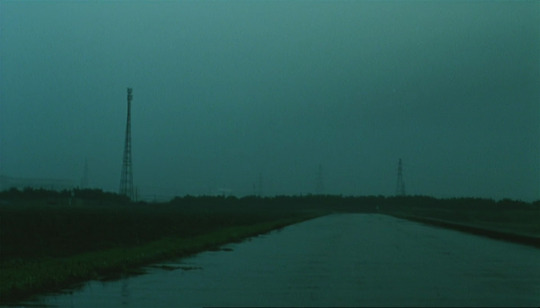

#Bashing#Masahiro Kobayashi#Fusako Urabe#Nene Ohtsuka#Takayuki Katô#Kikujirô Honda#Ryûzô Tanaka#Teruyuki Kagawa#Drama#2005
11 notes
·
View notes
Photo
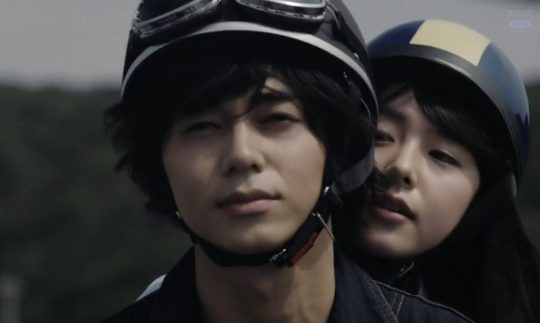
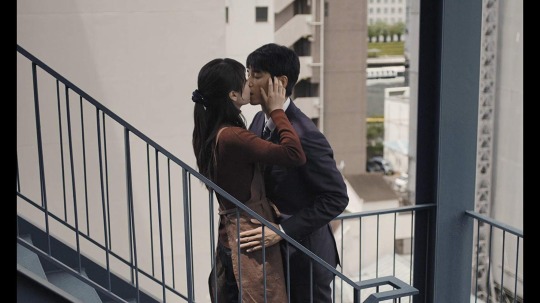



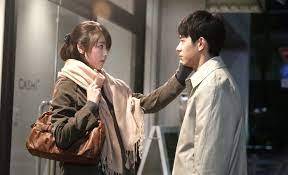




Asako I & II (Ryusuke Hamaguchi, 2018). Cast: Masahiro Higashide, Erika Karata, Sairi Ito, Koji Nakamoto, Koji Seto, Misako Tanaka, Daichi Watanabe, Rio Yamashita. Screenplay: Sachiko Tanaka, Ryusuke Hamaguchi, based on a novel by Tomoka Shibasaki. Cinematography: Yasayuki Sasaki. Film editing: Azysa Yamazaki. Music: Tofubeats.
10 notes
·
View notes
Photo

[Announcement] 饗宴『茜さすセカイでキミと詠う~絆~』 再演 (kyouen akanesasu sekai de kimi to utau ~kizuna~ saien)
you will be able to watch 2 shows @ mixchannel
[a VPN might be needed to watch the show^^]
price: ¥4.600 (each) + fees
◎ 前楽 (maeraku)
[June 20th, 2022 ~ 12:00]
◎ 千秋楽 (ssenshuuraku)
[June 20th, 2022 ~ 16:30]
#茜さすセカイでキミと詠う#akanesasu sekai de kimi to utau#千葉瑞己#chiba mizuki#四季涼雅#shiki ryouga#杉江優篤#sugie masahiro#栗原航大#kurihara koudai#熊谷魁人#kumagai kaito#福山聖二#fukuyama seiji#御堂耕平#midou kouhei#真野拓実#mano takumi#田中稔彦#tanaka toshihiko#白金倫太郎#shirokane rintarou
5 notes
·
View notes
Text





Jahmai Jones switches from 85 to 14. Last worn by Marwin González in 2022.
Jon Berti takes 19. Last worn by Masahiro Tanaka in 2020.
Austin Wells switches from 88 to 28. Last worn by Josh Donaldson in 2023.
Clayton Beeter takes 29. Last worn by Zach McAllister in 2023.
Nick Burdi takes 57. Last worn by Billy McKinney in 2023.
0 notes